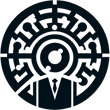How to Self-Certify Under the EU-US Data Privacy Framework (2025 Guide)
Learn how to self-certify under the EU-US Data Privacy Framework (DPF) in 2025. Step-by-step instructions, eligibility tips, and compliance insights for US businesses.
4/10/20252 min read
Introduction
If your company transfers personal data from the EU to the US, the EU-US Data Privacy Framework (DPF) may be your key to lawful, simplified data flows. But how do you actually become certified?
In this guide, we’ll walk you through how to self-certify under the DPF, what documents you’ll need, and how to stay compliant year after year.
What Is DPF Self-Certification?
The DPF is a data transfer mechanism approved by the European Commission in July 2023, replacing the invalidated Privacy Shield. U.S. companies can voluntarily self-certify to the Department of Commerce to demonstrate adequate protection of EU personal data.
Self-certification is:
Voluntary, but once certified, legally binding
Available only to US-based entities subject to the jurisdiction of the FTC or DoT
Publicly listed on the DPF List
Who Can Self-Certify?
You’re eligible to self-certify if:
You are based in the United States
Your business is subject to FTC or DoT enforcement (most companies qualify)
You handle EU personal data, directly or via a processor role
SaaS providers, HR platforms, marketing tools, and cloud service companies are common candidates.
Step-by-Step: How to Self-Certify Under the DPF
Step 1: Assess Eligibility
Confirm that you're under FTC/DoT jurisdiction
Map all personal data from the EU/EEA you process or receive
Step 2: Update Your Privacy Policy
Your privacy notice must:
Refer to your DPF certification status
Include a description of your DPF rights and commitments
List a designated independent recourse mechanism (IRM) (e.g., BBB National Programs or TRUSTe)
Explain data access, choice, and onward transfer policies
Provide a contact for complaints
Step 3: Choose a Dispute Resolution Provider
You must register with a recognized IRM to handle EU data subject complaints at no cost to them.
Example providers:
BBB National Programs
TRUSTe
JAMS
Some offer annual subscriptions bundled with support services.
Step 4: Prepare Internal Compliance Documents
Keep records of:
Data processing activities
Access rights handling
Onward transfer agreements
Data retention and security policies
These will be useful in case of regulatory inquiry or an EU controller DPA request.
Step 5: Submit the Application
Go to the Data Privacy Framework website and:
Complete the online self-certification form
Upload required documentation
Pay the annual fee (tiered based on company size/revenue)
📌 The Department of Commerce usually processes applications within 30 days.
Annual Re-Certification: Stay Compliant
Your certification is valid for one year. To renew:
Reassess your data practices
Update your privacy policy if needed
Pay the renewal fee
Confirm continued compliance with DPF principles
Failure to re-certify or uphold commitments may lead to FTC enforcement and removal from the DPF list.
Common Mistakes to Avoid
❌ Using outdated Privacy Shield language
❌ Forgetting to include dispute resolution info in your privacy notice
❌ Certifying but not updating internal data handling practices
❌ Missing your re-certification deadline
Bonus: Get Expert Help with Your Certification
Not sure how to structure your privacy notice or complete your application?
👉 Contact us to get personalized help with your DPF certification, privacy policy update, and compliance documentation.
Consulting
Expert guidance for EU-US data privacy certification program.
© 2025. All rights reserved.
